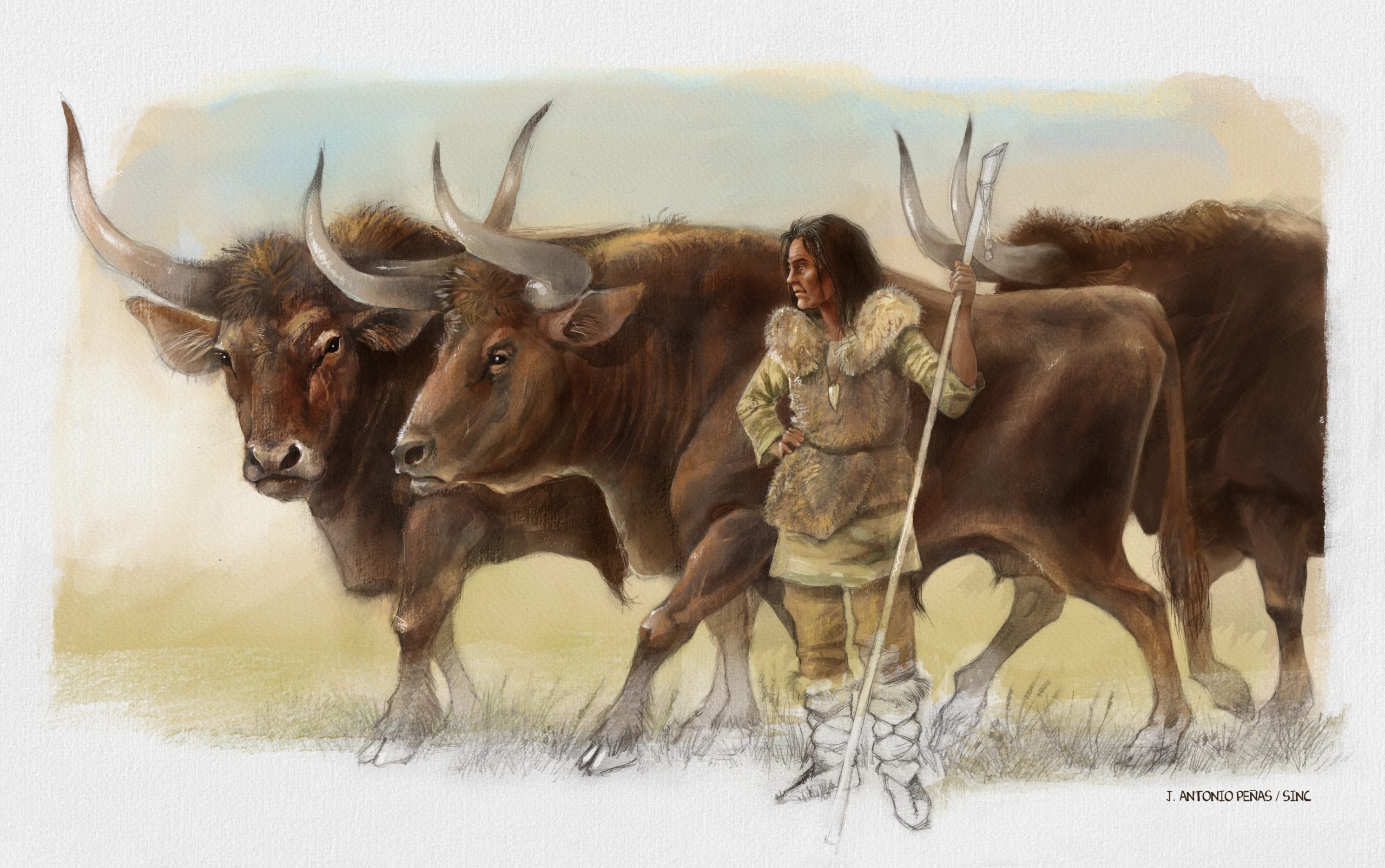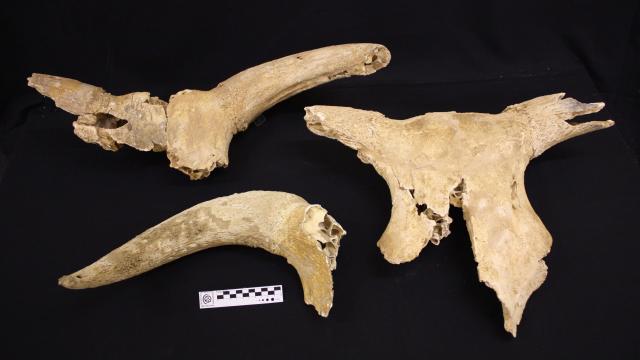For some 9,000 years, the bones of three aurochs — huge, extinct ancestors of modern cattle — languished at the bottom of a cave in northwestern Spain. A team of paleontologists have now genetically sampled the Mesolithic remains, which were found in the 1990s near a human skeleton, and they believe that the DNA could help decipher the mystery of whether these aurochs were fully wild or tamed by people.
To get the mitochondrial DNA for their work, the researchers ground up aurochs bones from nine different sites in Galicia, the northwestern-most region of Spain. Of particular interest were the three aurochs found in the Chan do Lindeiro cave, which were located near the remains of a woman nicknamed Elba, also about 9,000 years old. That opens up a new quandary about whether the aurochs of Galicia were wild or tamed — how, otherwise, would several specimens end up in the same spot as a human? The team’s results are published this week in the journal PLOS One.
“Given all the evidence, such as their similar chronology and the fact that the bones are intermingled at the base of a slump caused by the sinking of the ground — at a depth of 15 to 20 meters — we think that the woman and the aurochs were found together,” said co-author Aurora Grandal, a researcher at the University of A Coruña, in a Spanish Foundation for Science and Technology press release. “This interpretation is controversial because domestication is not regarded as having existed at the time.”

Of the 18 bone samples taken from aurochs (Bos primigenius) specimens, 11 were genetically sequenced. The researchers got a substantive glimpse into the animals’ genetic makeup and, by proxy, their relationships with other aurochs from around Europe and modern cows. Both species have genetically distinct subtypes labelled by haplogroup, referring to the large tranches of DNA in a given chromosome that distinguish one population from another. Some of these haplogroups are visibly different — the zebu, or indicine cattle, is more jowly than Jersey cows and has banana-shaped horns and a large hump. (Previously, a different team of researchers tried to pin down why modern cattle in the Middle East, where the aurochs is thought to have first been domesticated, share so much genetic information with indicine cattle).
The aurochs from Chan do Lindeiro cave were in the same haplogroup but had a surprising amount of genetic diversity between them. “This may indicate that they were from different origins, in a scenario in which the Elba woman played an active role; or a trait that simply reflected a very high genetic variability in the aurochs,” Grandal said.

“By studying their mitochondrial DNA, which is transmitted almost intact from mother to offspring, we can determine in which geographical areas the different lineages predominated and what their movements were due to changes in climatic conditions or even to humans following the onset of livestock farming,” said co-author Amalia Vidal, a paleontologist at the University of A Coruña, in the same release.
The team found that the cave aurochs were more closely related to British aurochs than any in Central Europe. British aurochs specimens are more recent than the Spanish ones, though, which are so far the oldest to undergo mitochondrial DNA sequencing. The team’s next step will be to look at nuclear DNA (which comes from a cell’s nucleus, rather than its mitochondria, and contains information on all genetic ancestry rather than just matrilineal ancestry) to understand the aurochs’s relationship with modern cows in the area. Since the aurochs were found with a woman, it’s possible that she was shepherding them somehow. The nuclear DNA may help address that question, because nuclear DNA fragments from other aurochs ancestries have been found in the genetic codes of some modern cattle.
